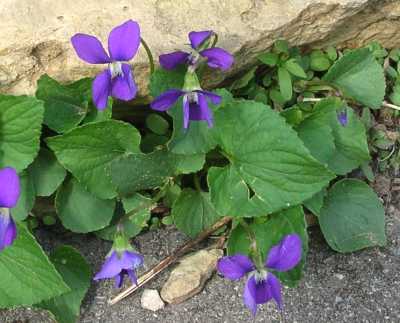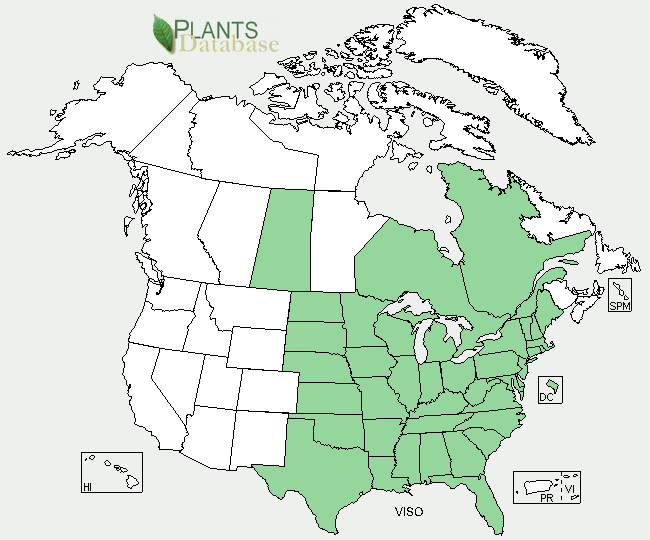“Stars will blossom in the darkness, violets bloom beneath the snow.” -- Julia C.R. Dorr
Habitat
Where have I missed it?
 If you love to take care of your lawn, you may have
spotted this lawn invader many times during early Spring
through Summer.
Viola sororia is found in a wide variety
of habitats including waste grounds, fields, meadows,
low woods, ditches, roadsides, and railroads.
It preferably grows in savanna or woodland areas with
rich, moist soils and partial sun and shade exposure.
However, the species may grow in prairies with up to 20
percent of shade. It is non-tolerant of high
temperatures with the optimum low temperature at 28 degrees
Fahrenheit below zero. Other violets belonging to the
Viola genus tend to reside in such conditions,
as well. Some of these include
Viola odorata (Sweet Violet), Viola
cucullata (Marsh Blue Violet), and Viola
selkirkii (Great-spurred Violet).
If you love to take care of your lawn, you may have
spotted this lawn invader many times during early Spring
through Summer.
Viola sororia is found in a wide variety
of habitats including waste grounds, fields, meadows,
low woods, ditches, roadsides, and railroads.
It preferably grows in savanna or woodland areas with
rich, moist soils and partial sun and shade exposure.
However, the species may grow in prairies with up to 20
percent of shade. It is non-tolerant of high
temperatures with the optimum low temperature at 28 degrees
Fahrenheit below zero. Other violets belonging to the
Viola genus tend to reside in such conditions,
as well. Some of these include
Viola odorata (Sweet Violet), Viola
cucullata (Marsh Blue Violet), and Viola
selkirkii (Great-spurred Violet).
Viola sororia is widely distributed throughout eastern United States and Canada and is native to these areas, as well. To see the Unites States county distributions of Viola sororia visit the Plants Profile Page of Viola Sororia on the United States Department of Agriculture Natural Resources Conservation Service website.
There are many organisms that reside mainly in eastern United States along with Viola sororia, such as the Mute Swan (Cygnus olor), although this organism may also reside in certain north-western areas. Also residing in eastern United States are the Green Heron (Buterides virescens), the Spotted Salamander (Abystoma maculatum), the Northern Maiden Fern (Adiantum pedatum), and the Barred Owl (Strix varia) which also resides in parts of Canada that the Common Blue Violet resides in. There are many more organisms that make up the biodiversity in Canada and eastern United States. You can cruise through Multipleorganisms.net to see some of these organisms!
Each species has to find ways that will allow it to survive in its habitat. Check out how Viola sororia does this on the Adaptations page next!
